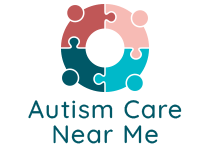Autism is often challenging to spot as its symptoms and severity differ from person to person. Some children show signs of autism right away while others only show it after a few months or even a year or more. About half of parents will notice issues within a child’s first year, and between 80% and 90% will see problems by the time the child turns two. Regardless, it’s essential to be able to spot the symptoms of autism to know if your child needs support from an autism treatment program.
Discovering if your child is on the autism spectrum is crucial for finding early intervention for autism spectrum disorder. These programs can dramatically impact their future cognitive and social development. However, it’s essential to know that an child with autism might show all or none of the common symptoms of autism. That’s why it is vital to get a professional diagnosis.
Symptoms of Autism
The definition of autism is “a serious developmental disorder that impairs the ability to communicate and interact.” Most of the common symptoms are ones that influence the child’s ability to show emotions or respond to social situations.
The earliest symptoms of autism in infants include:
- Avoiding eye contact
- Few signs of joy such as smiles
- Delayed speech and sounds (i.e., babbling, cooing)
- No gestures such as waving or pointing
- No response to hearing their name
Some signs you should watch for when the child gets older include:
- Having obsessive interests
- Difficulty understanding other people’s feelings
- Poor social skills
- Little to no awareness of safety or danger
- Intense dislike of minor changes to routine or environment
- Constant repetition of words or phrases
- Intense reactions to small stimulus changes
- Repetitive behaviors such as flapping or rocking
- Avoidance of physical contact or gestures
- Lining up toys or playing with them the same way
- Impulsive and have a short attention span
- Strange eating and sleeping habits
- Aggressive towards others and self
Of course, many of these behaviors might seem reasonable among children and aren’t necessarily proof of autism.
How Can You Tell If Your Child is on the Autism Spectrum?
The best way to see if your child needs targeted intervention for autism spectrum disorder is to use the Modified Checklist for Autism in Toddlers, Revised with Follow-Up (M-CHAT-R/F; Robins, Fein, & Barton, 2009). This two-stage parent-report screening tool helps indicate if a child between 16 and 30 months of age may need further support. Please consult a doctor if your child shows symptoms of autism.
Children should also receive developmental screening during doctor visits at nine months, 18 months, and 24 or 30 months. These screenings help indicate if a child is performing the necessary skills and identify possible learning developments.
You may need additional screenings if your child is at risk for developmental delays due to low birth weight, a premature birth, or has family members on the autism spectrum. Ask your doctor to enroll your child in a developmental screening test. It’s the best way to ensure your child’s typical developmental behaviors.
Note that autism exists on a spectrum, and symptoms might be more severe in some people than others.
The Diagnostic and Statistical Manual of Mental Disorders (DSM-5) categorizes autism spectrum disorder into three levels:
Level 1. This level is known as high-functioning autism. The patient has mild symptoms that don’t impede very much on daily activity.
Level 2. Patients at this level have some trouble with social interactions and may need intervention treatment.
Level 3. This level is the most severe form of autism. Those in this level often require intensive therapy of the help of a full-time aide.
What You Can Do
If your child is showing symptoms of autism, you should seek a professional diagnosis. A doctor can help determine if your child needs targeted intervention and will know how to treat them best.







